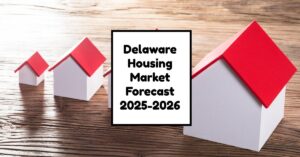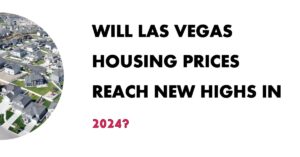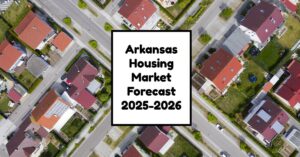The Delaware housing market forecast for 2025-2026 reveals a mixed outlook for home prices across various regions in the state. With average home values around $388,163, reflecting a modest annual price increase of 2.7% as reported by Zillow, the market remains dynamic.
While we do not anticipate dramatic declines or a housing crash, subtle fluctuations are likely as the balance of supply and demand shifts. This post will explore the detailed predictions for the coming years, focusing on regional variations, anticipated trends, and what homeowners can expect.
Delaware Housing Market Forecast 2025-2026
Key Takeaways
- Average Home Value: $388,163
- Median Sale Price: $349,333 (as of July 31, 2024)
- Median List Price: $437,450 (as of August 31, 2024)
- Days Until Pending Sale: Homes are pending in approximately 11 days.
- Market Trends: 28% of sales were over the list price; 51.4% under the list price.
Delaware is not just a charming place to live; its recent housing trends demonstrate a solid market with opportunities for both buyers and sellers. As we explore this forecast, we'll highlight significant state statistics and delves deeper into specific regions with unique characteristics.
Current Market Overview
Recent data indicates that the average home value in Delaware has reached $388,163. This represents a 2.7% increase over the past year, according to Zillow. The median sale price stands at $349,333 as of July 31, 2024, while the median list price surged to $437,450 by the end of August 2024. Homes are moving quickly, pending in as little as 11 days, showcasing the competitiveness of the current market landscape.
One striking metric is the sale-to-list ratio currently at 0.994, implying that homes are selling very close to their asking prices. This figure, accompanied by the fact that 28% of sales occurred at prices exceeding the listing price, reflects a robust market where eager buyers are willing to outbid each other. However, it’s notable that 51.4% of sales were below the listing price during July 2024, suggesting that buyers have room for negotiation in certain situations, particularly as market dynamics shift.
Regional Forecasts and Trends
Understanding broader market trends is essential, but regional insights can provide a clearer picture of what to expect in different parts of Delaware. The following analysis breaks down predicted growth and challenges across varying regions:
Major Statistical Areas (MSA) Forecast
For the period between September 2024 and August 2025, we can anticipate different behaviors across Delaware's MSA regions:
- Salisbury, MD (DE MSA):
- September 2024: 0% change
- November 2024: -0.2% decline
- August 2025: 1.2% growth projected
- Dover, DE (DE MSA):
- September 2024: 0% change
- November 2024: -0.1% decline
- August 2025: 1.7% growth projected
From this forecast, we observe that while certain areas may experience slight downturns in the short term, growth is anticipated as we progress into 2025. It's vital to remain attuned to local market fluctuations rather than relying solely on statewide averages.
Will Home Prices Drop? Will There Be a Crash?
Many market analysts express caution regarding the potential for a significant downturn in home prices. Most forecasts do not indicate a severe housing crash in Delaware. Instead, we are likely to see minor decreases in some areas followed by corrections as demand stabilizes against increasing inventory. With the aforementioned 51.4% of sales going for less than the list price in July, sellers might find it necessary to adjust their expectations to meet the current market conditions.
One contributing factor to these dynamics is the recent rise in available inventory, which may not entirely align with buyer demand. The growth is pivotal; as potential buyers have more options, competition may ease, encouraging negotiations and ultimately pressuring prices in certain neighborhood.
Forecast for 2026
Looking further ahead to 2026, experts forecast a mild recovery period characterized by infrastructure improvements and economic growth. Predictions suggest that as job opportunities increase and population growth becomes more pronounced, we may see a resurgence in demand for housing. This trend could possibly lead to home prices increasing by 3% to 4% by 2026.
The potential for suburban areas around Wilmington and Dover to capitalize on increasing population influx may drive prices and demand significantly higher, elevating their respective housing markets. Many buyers looking for affordable housing options hidden within the charm of Delaware’s communities will continue to pursue these opportunities.
Key Highlights
Average Home Value: $388,163 (2.7% annual increase)
Median Sale Price: $349,333 (as of July 2024)
Median List Price: $437,450 (as of August 2024)
Regions on the Rise
| Region | Forecasted Growth by 2025 |
|---|---|
| Salisbury, MD | 1.2% |
| Dover, DE | 1.7% |
Overall Market SentimentSales Trends: 28% of sales above list price; 51.4% below list price (as of July 2024).
Market Outlook: Slight price fluctuations expected, but overall stability projected through 2026.
My Opinion on the Forecast
In my opinion, the Delaware housing market is presently in a favorable position as it navigates through minor fluctuations. As supply chains stabilize and buyer preferences evolve, we can expect a healthy market that reflects both local economic growth and the changing needs of homeowners.
Conclusion
The Delaware housing market forecast for 2025-2026 suggests a stable and evolving landscape. While slight variations in home prices across different regions may occur, there are ample opportunities for buyers and sellers alike. Homeowners should keep a close eye on local market trends to make informed decisions that capitalize on the market’s potential.
As Delaware continues to leverage its strategic location and growing job markets, the momentum may well carry through the coming years, creating both challenges and opportunities for prospective buyers and existing homeowners.
Related Articles:











